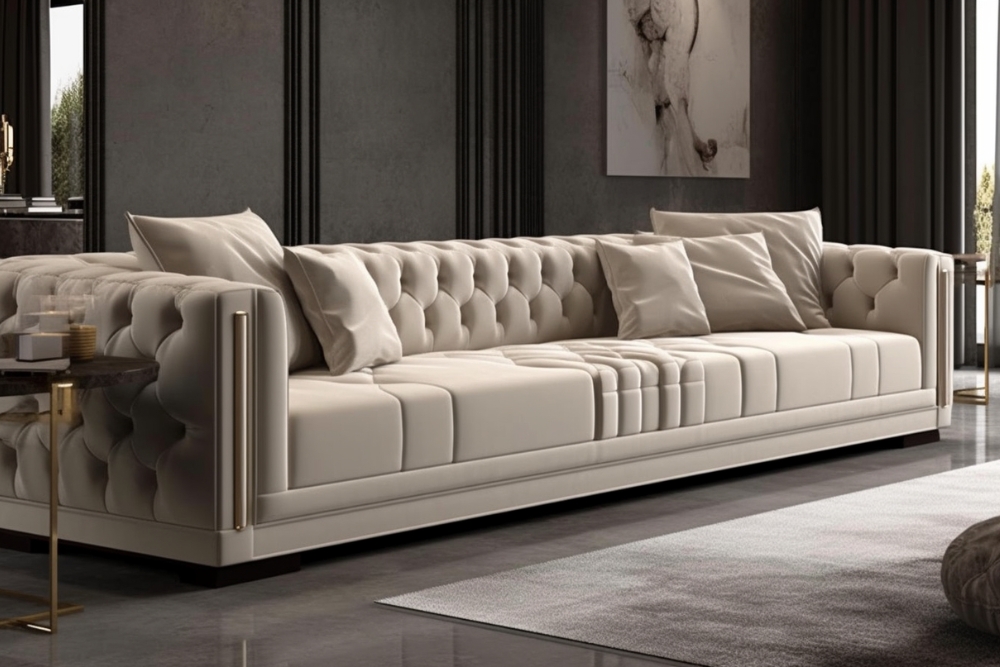Cleaning Services: How Old Sofas and Carpets Gain a Second Life
When furniture begins to show signs of wear and tear, many homeowners face a difficult decision: replace these expensive items or find ways to extend their lifespan. Professional cleaning services offer a middle ground, providing specialized techniques that can dramatically transform aging sofas and carpets. Rather than discarding perfectly functional furniture that simply looks tired, these services can restore appearance, improve hygiene, and add years of use to household staples.

Affordable Ways to Refresh Worn Furniture
Homeowners often look for affordable ways to refresh worn furniture without committing to costly replacements. Professional cleaning services represent a fraction of replacement costs while delivering significant aesthetic improvements. A comprehensive sofa cleaning typically costs between $100-250 depending on size, material, and condition—compared to $800-3,000 for a new quality sofa.
Beyond professional services, preventative maintenance extends the benefits of deep cleaning. Regular vacuuming removes surface dirt before it settles deeper into fabrics. Prompt attention to spills prevents permanent staining, while fabric protectors create barriers against future accidents. These simple practices complement professional cleaning to maintain furniture appearance between service appointments.
For budget-conscious homeowners, DIY spot cleaning methods using household ingredients like baking soda, vinegar, and mild dish soap can address minor stains and odors. However, these approaches lack the extraction power of professional equipment, making them better suited for maintenance than restoration of significantly soiled items.
Deep Cleaning Techniques for Stubborn Stains
Cleaning companies use techniques that remove deep stains and dust from sofas and carpets through specialized equipment and processes. Hot water extraction—often called steam cleaning—remains the gold standard for deep fabric cleaning. This method injects heated cleaning solution deep into fibers and immediately extracts it along with dissolved dirt and contaminants.
For delicate fabrics unsuitable for wet cleaning, dry cleaning methods employ specialized solvents that break down oils and stains without excessive moisture. Technicians apply these solutions with controlled applicators, then use specialized tools to lift away both the solvent and dissolved contaminants.
Enzymatic cleaners represent another professional approach, particularly effective for organic stains and odors from pets, food, or bodily fluids. These specialized formulations contain natural enzymes that literally break down organic matter at the molecular level rather than simply masking odors or removing surface discoloration.
Preparing Items for Sale or Reuse
This service is popular among those preparing items for sale or reuse, as clean, fresh-smelling furniture commands significantly higher resale prices. Online marketplaces and secondhand stores have created renewed interest in furniture restoration and resale, making professional cleaning a worthwhile investment for sellers.
Real estate professionals frequently recommend sofa and carpet cleaning services before listing homes. Clean furniture contributes to positive first impressions during showings, while removing embedded allergens and irritants creates healthier environments that appeal to potential buyers. Some staging experts report that clean, fresh-smelling furniture can contribute to faster sales and even higher offers.
Donation centers and charitable organizations also benefit from professional furniture cleaning. Many organizations must decline stained or odorous furniture donations regardless of structural condition due to health regulations. Professional cleaning makes more items acceptable for donation, extending their useful life while helping those in need.
Professional Cleaning Service Providers and Costs
The professional cleaning market offers various service levels and specializations to address different furniture restoration needs. National chains provide consistent service with standardized training and equipment, while local specialists often deliver personalized attention and customized solutions for challenging items.
| Service Provider | Specialization | Average Cost Range |
|---|---|---|
| Stanley Steemer | Hot water extraction for carpets and upholstery | $99-$250 for sofas |
| Chem-Dry | Low-moisture hot carbonation extraction | $119-$269 for sofas |
| ZEROREZ | Patented alkaline water cleaning (no harsh chemicals) | $129-$299 for sofas |
| Molly Maid | General furniture/upholstery cleaning | $100-$175 for sofas |
| Local specialists | Custom treatments for antiques/delicate fabrics | $150-$400 for sofas |
Prices, rates, or cost estimates mentioned in this article are based on the latest available information but may change over time. Independent research is advised before making financial decisions.
Many companies offer combination packages that provide substantial discounts when booking both carpet and upholstery cleaning together. Additional services like stain protection, deodorizing treatments, and anti-allergen treatments typically add 10-30% to base cleaning costs but can significantly extend the benefits of professional cleaning.
Environmental Benefits of Furniture Restoration
Beyond personal financial benefits, extending furniture lifespan through professional cleaning offers substantial environmental advantages. The EPA estimates that Americans dispose of approximately 12 million tons of furniture annually, with much ending up in landfills despite having reusable frames and structures.
Manufacturing new furniture requires significant raw materials and energy. A typical sofa contains wood, metal, foam, and synthetic fabrics—all with substantial environmental footprints. By extending furniture lifespan through professional cleaning, homeowners reduce demand for these resource-intensive manufacturing processes.
Additionally, many professional cleaning companies have embraced eco-friendly practices and solutions. Water-based extraction systems recapture and properly dispose of contaminants rather than releasing them into wastewater systems. Plant-based cleaning solutions have replaced many harsh chemicals previously standard in the industry, reducing environmental impact while still delivering effective cleaning.
Conclusion
Professional cleaning services offer compelling benefits for extending furniture life, from significant cost savings compared to replacement to environmental advantages of reduced furniture waste. Whether preparing items for continued personal use, resale, or donation, these services transform tired furnishings into refreshed pieces worthy of many more years of service. As sustainability concerns continue growing alongside household budget pressures, the restoration approach to furniture management represents a practical solution balancing financial, aesthetic, and environmental considerations.




